Description
What is a Dipole Omnidirectional Antenna 4G LTE Waterproof Antenna?
The CTRF-ANTENNA-AP-7027-13190-SMA item is an Omnidirectional Dipole 4G LTE Antenna Waterproof Antenna, it comes with a straight plastic antenna radome with 13x190mm size and 5dBi high-gain, it has a standard SMA connector insert to the plastic TPEE radome with an IP67 waterproof grade for indoor-outdoor using.
The Dipole Omnidirectional Antenna 4G LTE Waterproof Antenna style also has the 400-480Mhz frequency UHF antenna style, GSM antenna style, and 2.4G 5.8G Wifi antenna style.
The Dipole Omnidirectional Antenna 4G LTE Waterproof Antenna is provided by C&T RF Antennas Inc, the waterproof antenna manufacturer in China.
C&T RF Antennas Inc provides internal & external antennas with the antenna radio frequencies such as NFC, 169MHz, 230MHz, 315MHz, 433MHz, 868MHz, 915MHz, VHF&UHF, Lora, NB-IoT, ADS-B, GSM, GNSS, Wifi 2.4GHz, 5.8GHz, Cellular 2G 3G 4G LTE, GPS, 5G NR, etc.
C&T RF Antennas Inc. provides RF antennae with Omni & Directional antenna types such as Dipole Antennas, Whip Antennas, Marine Antennas, Router Antennas, MIMO Antennas, Combo Antennas, PCB Antennas, FPC Antennas, Spring Antennas, Magnetic Antennas, Sector Antennas, Yagi Antennas, and Accessories, etc, for IoT & M2M industries.
Contact us for more details on the Dipole Omnidirectional Antenna 4G LTE Waterproof Antenna such as the Omnidirectional Antenna 4G datasheet, Omnidirectional Antenna 4G pricing, and Omnidirectional Antenna 4G inventory.
Or other Omnidirectional Antenna 4G antenna styles.
Dipole Omnidirectional Antenna 4G LTE Waterproof Antenna Specifications
Dipole Omnidirectional Antenna 4G LTE Waterproof Antenna Electrical Specifications |
|
| RF Antenna Type | Omni Rubber Duck Antenna |
| Model | CTRF-ANTENNA-AP-7027-13190-SMA |
| Frequency Range | 698-960MHz, 1710-2700MHz |
| Gain | 3/5dBi |
| VSWR | ≤2.0 |
| Impedance | 50 Ω |
| Polarization | Linear |
| Directional | Omnidirectional |
| Connector | SMA Male |
| Max Power | 50W |
| Lightning Protection | DC-Ground |
Dipole Omnidirectional Antenna 4G LTE Waterproof Antenna Mechanical Specifications |
|
| Dimension | 13*190mm |
| Weight | Approx. 15g |
| Radome Material | Plastic ABS |
| Operation Temperature | -20˚C ~ +85˚C |
| Storage Temperature | -40˚C ~ +80˚C |
| Color | Black |
| Antenna Design | Dipole Array |
| Mounting | SMA Connector |
| Safety Emission and other | RoHS Compliant |
| Applications | ISM/SCADA/Utilities, IoT/M2M/NB-IoT/LoRa, 2G 3G 4G LTE/LTE-IoT, GSM GPRS UMTS, etc. |
Dipole Omnidirectional Antenna 4G LTE Waterproof Antenna Video
Omnidirectional Antenna 4G LTE diversity antenna
In theory, the diversity of LTE is to increase the sensitivity of the main set by 3db, but in fact, it is only about 1.5db-2db.
The multiple-input, multiple-output (MIMO) spatial diversity antenna configuration is specifically designed for 3GPP Long Term Evolution (LTE) mobile communication systems.
The LTE system specifies three types of antenna technologies, MIMO, beamforming, and diversity methods. These three technologies are critical to improving signal robustness and realizing LTE system capabilities. Understanding how these different antenna technologies work will help test systems that use these methods.
The multiple-input, single-output (MISO) model is slightly more complicated. It uses two or more transmitting antennas and one receiving antenna.
In the MISO system (also commonly referred to as the transmit diversity system), the same data is sent to two transmit antennas, but the data is encoded so that the receiver can recognize which transmitter the data comes from.
Transmit diversity makes the signal more resistant to attenuation and can improve performance under low signal-to-noise ratio (SNR) conditions.
This technology does not directly increase the data rate, but it supports the existing rate with lower power consumption. The transmit diversity can be enhanced by the feedback from the receiver to the indicated phase equalization and the power of each antenna.
The single input, multiple outputs (SIMO) approach (also often referred to as receive diversity technology) uses one transmit antenna and two or more receive antennas. Like the transmit diversity method, it is also very suitable for working under low SNR conditions.
When two receivers are used, a 3dB gain can theoretically be achieved. Because only one data stream is transmitted, the data rate does not change.
The MIMO method requires two or more transmitting antennas and two or more receiving antennas. This mode is not a simple superposition of MISO and SIMO, because multiple data streams are simultaneously transmitted at the same frequency and time, so the advantages of different paths in the wireless channel are fully utilized.
The number of receivers in the MIMO system must be no less than the number of data streams being transmitted.
Please be careful not to confuse the number of transmitted data streams with the number of transmitting antennas. For example, in the case of transmit diversity (MISO), there are two transmit antennas, but only one transmit stream.
Superimposing SIMO on MISO will not result in a MIMO system, even if there are two transmitting and receiving antennas after superposition. In the system, it is always possible that the number of transmitters is greater than the number of data streams being transmitted, but not vice versa.
If N data streams are transmitted through less than N transmit antennas, no matter how many receivers there are, the data will not be completely descrambled.
Overlapping data streams without space diversity will only cause interference. However, if N data streams are distributed to at least N antennas in space, the cross-interference and noise in the wireless channel are low enough to not cause data loss, and N receivers can completely reconstruct the original data flow.
For MIMO operation, the transmission from each antenna must have a unique identity so that each receiver can determine which combination of transmissions it has received. The identification is generally accomplished by means of a pilot signal, which uses an orthogonal pattern for each antenna.
In this case, the spatial diversity of the wireless channel makes it possible for MIMO to increase the data rate. A basic form of MIMO is to allocate a data stream for each antenna. Then the channel mixes the two transmissions so that from the receiver’s perspective, each antenna receives a combination of data streams.
Decoding the received signal requires skill, where the receiver analyzes the pattern that characterizes each transmitter to determine which combination it represents. Using an inverse filter and accumulating the received data stream will reconstruct the original data.
A more advanced form of MIMO includes special precoding to match the transmission to the eigenpattern of the channel. This optimization will distribute each data stream to be sent to more than one transmit antenna.
In order for this technology to work efficiently, the transmitter must grasp the channel conditions and in some cases, these conditions must be fed back by the user equipment (UE) in real time.
This optimization makes the system more complex but can improve performance. The theoretical gain of a MIMO system is a function of the following factors: the number of transmitting and receiving antennas, radio frequency propagation conditions, the ability of the transmitter to adapt to changing conditions, and SNR.
The ideal situation is that the paths within the wireless channel are uncorrelated as if they are independent, physically connected paths with cables and there is no cross-interference between the transmitter and the receiver.
Since such conditions hardly exist in real space, it is meaningless and impossible to quote MIMO gain without specifying the environmental conditions.
The MIMO gain under ideal conditions is easier to determine. For a 2×2 system with two simultaneous data streams, double capacity and data rate are both possible.
Under the conditions of high SNR and short line-of-sight, MIMO technology performs best. The line-of-sight is equivalent to cross-channel interference, and the longer the line-of-sight, the less likely it is to increase the gain.
Therefore, MIMO is particularly suitable for indoor environments with multiple paths but limited viewing distance in general.
SU-MIMO system with different MIMO settings
The first case is a single-user MIMO (SU-MIMO) system, which is the most common form of MIMO and can be used in the uplink or downlink of a wireless system. The basic goal of SU-MIMO is to increase the data rate for a user. The capacity of the cell is also increased accordingly.
If 4G LTE does not use a diversity antenna, how much impact does it have on performance?
In terms of data definition, LTE has two modes, type1, and type2. The two are different.
The former receives the same content, the latter receives two channels of information, and finally, the algorithm is combined; without a diversity antenna, it is equivalent to half of the traffic for type 2. The base station needs to retransmit;
From the definition of radiofrequency, if the diversity antenna is missing, for type1, the sensitivity may be 3dB less from the point of view of cable direct connection;
At the air interface, the information of the main and auxiliary antennas is generally orthogonal. Due to multipath and other reasons, it happens that the main antenna is the weakest, The diversity antenna signal is the best, and the loss is not just 3dB.
If the throughput is not measured, the diversity antenna will increase the overall receiving sensitivity. If the sensitivity of the single main set is enough, it does not matter if the main set is not calibrated; if the main set sensitivity is not enough, adjust the diversity to be similar to the main set.
It will increase 3db (full rb), and some frequency bands and different rbs may increase higher; if you want to measure throughput, you need to adjust the diversity one, otherwise, it is likely to fail.
Dipole Omnidirectional Antenna 4G LTE Waterproof Antenna Features



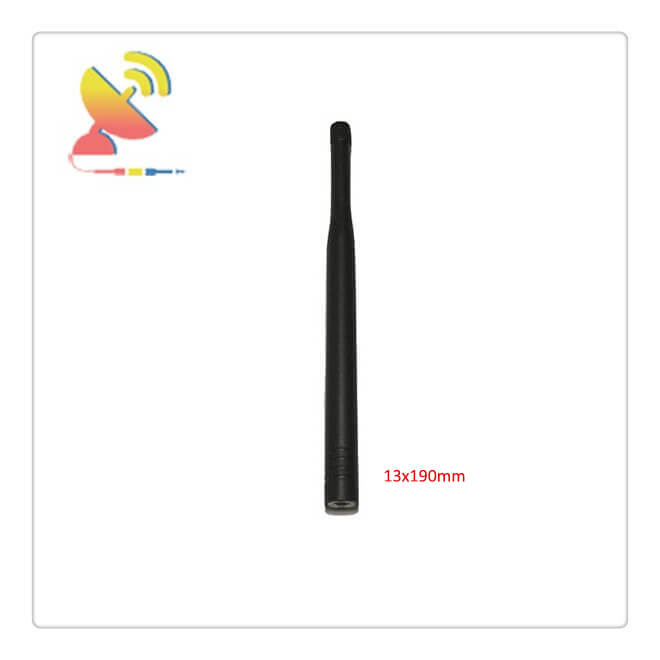
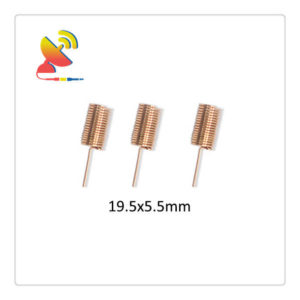
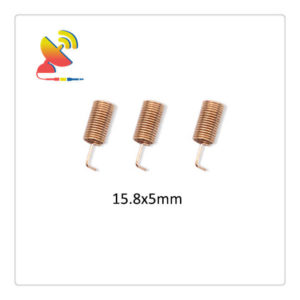
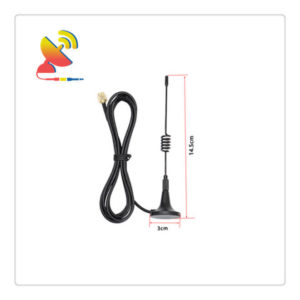
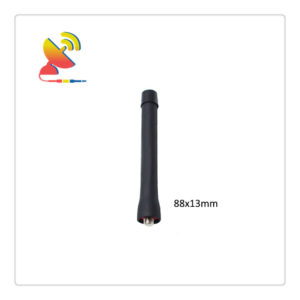
Reviews
There are no reviews yet.